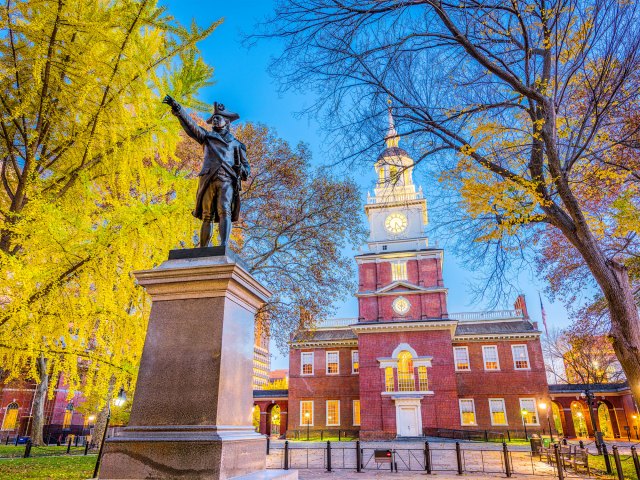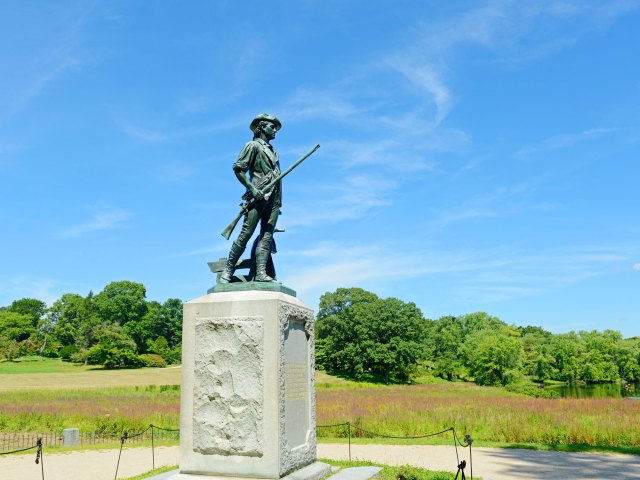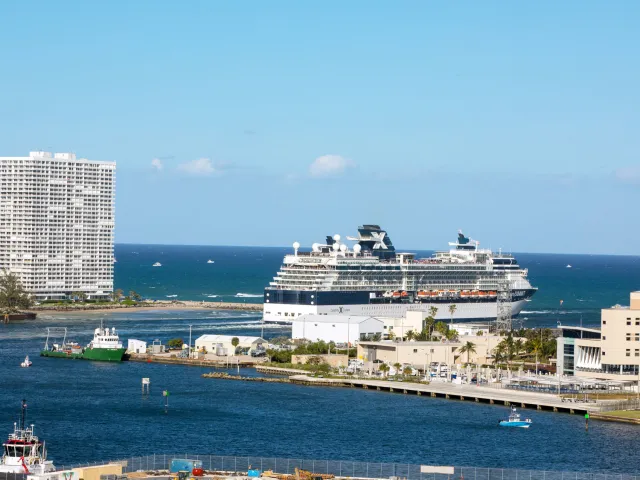From the first spark of rebellion at the Battles of Lexington and Concord on April 19, 1775, to the final land battle at Yorktown in 1781, historic sites from the American Revolution can be found throughout the Eastern U.S. Commemorating colonial uprisings, pivotal moments, and historic battles, the following six sites played a key role in the birth of a nation — here’s how history buffs can check them out.
Independence Hall – Philadelphia, Pennsylvania

Situated in Philadelphia’s historic district, Independence Hall is known as the official birthplace of the nation. Fifty-six Revolutionary leaders gathered within its halls on July 4, 1776, to sign the Declaration of Independence, an act that severed ties between the colonies and England. Eleven years later, Independence Hall also served as the gathering place for 12 state representatives to debate and sign the U.S. Constitution, thus uniting the colonies into a single nation.
Today, the historic building is a UNESCO World Heritage Site and is open to the public via ticketed tours. Led by national park rangers, these tours include a visit to the Assembly Room (where the Declaration of Independence and U.S. Constitution were both signed) and the historic Pennsylvania Supreme Court Chamber. Visitors will also be able to spot George Washington’s rising sun chair, where the first president of the U.S. sat for nearly three months during the Constitutional Convention.
Boston Tea Party Ships and Museum – Boston, Massachusetts

The ideological uprising that began brewing in the American colonies reached a tipping point on December 16, 1773, in what became known as the Boston Tea Party. Infuriated by taxes imposed on tea shipped from Britain, colonists rebelled by tossing 40 chests of British East India Company Tea into Boston Harbor. With 92,000 pounds of tea destroyed, the defiant act was a pivotal turning point in the tensions between the colonists and the British, causing patriots to rally for the American Revolution.
Today, the Boston Tea Party Ships and Museum can be found in Griffin’s Wharf, the same location where the tea was famously offloaded 250 years ago. Visitors can marvel at the full-scale replicas of 18th-century sailing vessels and witness a reenactment of the historic town meeting that led to the act of rebellion. Open seven days a week, the museum is home to an original tea chest from the Tea Party, recovered after being dumped into Boston Harbor.
Paul Revere House – Boston, Massachusetts

Dating back to 1680, the Paul Revere House is the oldest building in downtown Boston and the former home of Revolutionary War hero Paul Revere. Revere purchased the house in 1770 and lived there with his wife, mother, and children for several decades. It was during this time that he embarked on his famous midnight ride from Boston to Lexington on April 8, 1775, to warn John Adams and John Hancock about an impending arrest from British soldiers.
After undergoing restoration in the early 1900s, the structure retains about 90% of its original build. To reflect its historical roots, the home is styled with colonial-era furnishings, with several pieces that belonged to the Revere family on display in the bed chambers. As a National Historic Landmark, the Paul Revere House is open year-round for self-guided tours.
Minute Man National Historical Park – Massachusetts

Located 22 miles northwest of Boston, Minute Man National Park spans the Massachusetts towns of Lexington, Lincoln, and Concord. On April 19, 1775, these lands were the site of the Battles of Lexington and Concord, which marked the first official engagement between the British and colonists in the Revolutionary War. Guided tours of the park begin at Old North Bridge in Concord, the exact location where the very first shot in the war — known as the “Shot Heard ‘Round the World” — was fired.
The park also contains Battle Road Trail, a five-mile walking trail that runs from Meriam’s Corner in Concord to the park’s boundary in Lexington, following the route of the skirmish between the Minutemen and the Redcoats in 1775. Visitors can also stop by Buckman Tavern, the watering hole where colonial militia gathered, or partake in numerous guided programs led by park rangers.
Washington Crossing Historical Park – Pennsylvania

In December 1776, six months after the Declaration of Independence was signed, morale amongst the troops was low. It was Christmas, and the 2,400 soldiers stationed along the Delaware River were cold and weary. In a strategic move, General Washington pushed the Continental Army to cross the icy river under the cover of darkness to launch an attack on the Hessians (German troops hired by the British). The victory was a turning point and proved instrumental to the success of the American Revolution.
Located on the Pennsylvania side of the Delaware River, Washington Crossing Historical Park commemorates this bold river crossing. The park includes a historic village, a blacksmith shop with live demonstrations, and the Thompson-Neely House, which served as a temporary army hospital during the war. A nearby memorial cemetery marks soldier graves who perished not in battle but from illness in the encampment.
Yorktown Battlefield – Virginia

The Revolutionary War had been raging for six years before the Siege of Yorktown cemented U.S. victory in 1781. A year before, France had sent over thousands of French soldiers commanded by the esteemed General Rochambeau. It was under Washington and Rochambeau’s orders that the Allied armies marched from New York City to Yorktown, Virginia, to launch an attack on British troops.
The final major land battle of the war lasted for three weeks on Yorktown Battlefield, until the British surrendered on October 19, 1781. Today, the Colonial National Historic Park Virginia commemorates the ending point of the Revolutionary War, and visitors can learn more about the battle at the visitor center and museum before taking a self-guided tour of the battlefield.
More from our network
Daily Passport is part of Optimism, which publishes content that uplifts, informs, and inspires.























